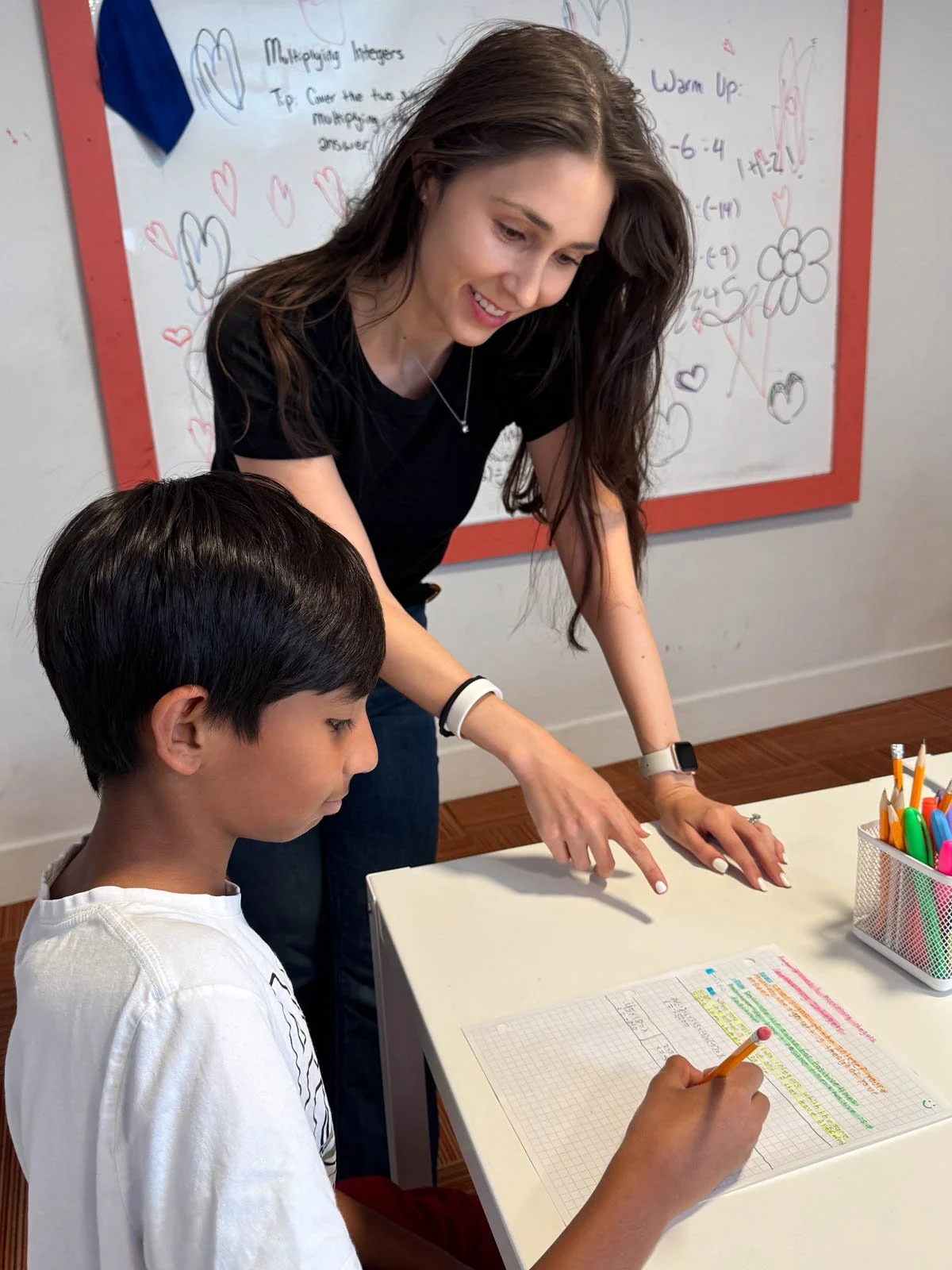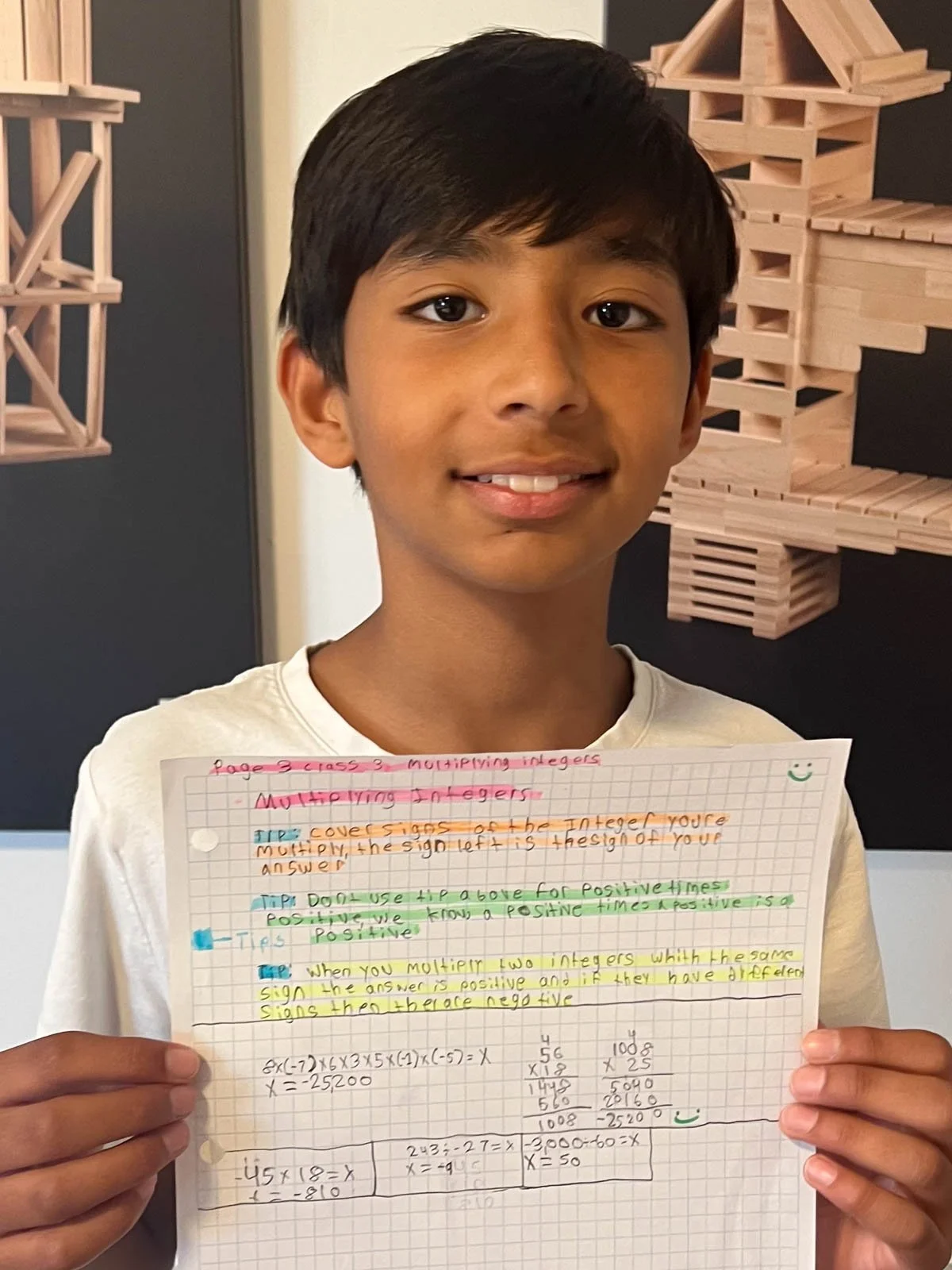Don’t Throw Away Your Pencil!
By Jordan Thompson
Research and personal experience stress the indispensable role of writing in the learning process. Studies show that the act of writing by hand strengthens brain connections and supports learning more effectively than typing (Van der Meer and Van der Weel, 2024). When your child engages in solving math problems on paper, they not only improve their comprehension but also retain concepts more effectively. This hands-on approach remains a crucial educational tool, contributing to deeper engagement and understanding.
Step-By-Step Success
Research shows there are significant improvements in memory, understanding and retention when problems are physically written out (Smoker et al, 2009). When your child approaches a math problem, a step-by-step method can be incredibly important to help reduce frustration when tackling complex problems. By breaking problems into smaller, manageable parts and documenting their work, your child can track their progress, identify errors, spot patterns and engage more intentionally with the material. This method not only aids in finding the correct answer but also builds confidence in their problem-solving abilities. Additionally, students will be required to show their work as they enter middle school and high school.
The Importance of Note-Taking
It is beneficial to your child to write notes in their own words. Rephrasing math concepts and instructions in a way that resonates with them not only makes the material more meaningful and accessible but also solidifies their understanding. Well-organized notes are vital for effective review and comprehension of concepts. This process of writing, organizing and personalizing notes enhances their retention and ability to review and apply the concepts later, reinforcing their learning and making their notes a valuable reference tool.
Using Tools: Graph Paper and Color Coding
Introducing your child to graph paper and color coding can take their mathematical understanding and approach to the next level. Graph paper provides a tangible grid that helps with drawing shapes accurately and aligning numbers neatly. This hands-on approach reinforces spatial awareness and precision. Additionally, color coding can make math more engaging and organized. This visual aid can make it easier to differentiate between separate elements of a problem and keep their work clear and structured.
The study skills discussed—writing problems out, taking comprehensive notes and using visual tools—are instrumental not just in math but across the entire spectrum of education. By reinforcing these skills, students develop a deeper, more comprehensive approach to learning that fosters critical thinking and problem-solving abilities. Whether it's writing essays, conducting research or solving complex science problems, the principles of careful documentation and structured thinking lay a strong foundation for success across all areas of study.
Check out these Grupology Thinksheets for tips on how to maximize the use of graph paper!
Jordan Thompson is an algebra teacher with a passion for linking math to real-world applications. Outside the classroom, Jordan unwinds by tackling math puzzles at home and enjoys golfing and paddleboarding with her husband and their dog, Huckleberry.
Citations:
A. van der Meer and F.R. van Der Weel. Handwriting but not typewriting leads to widespread brain connectivity: a high-density EEG study with implications for the classroom. Frontiers in Psychology. Published online January 26, 2024. doi: 10.3389/fpsyg.2023.1219945.
Smoker, T. J., Murphy, C. E., & Rockwell, A. K. (2009). Comparing Memory for Handwriting versus Typing. Proceedings of the Human Factors and Ergonomics Society Annual Meeting, 53(22), 1744-1747. https://doi.org/10.1177/154193120905302218



